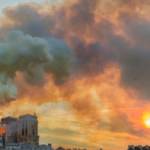What’s the Worst That Could Happen? Exploring the Most Memorable Film Disasters and Catastrophes
What’s the Worst That Could Happen? Exploring the Most Memorable Film Disasters and Catastrophes
An Introduction to Film Disasters and Catastrophes
Film disasters and catastrophes have long captured the fascination of audiences around the world. From epic natural disasters to horrifying accidents, these movies have a way of immersing viewers in the worst-case scenarios. In this article, we will explore some of the most memorable film disasters and catastrophes, delving into their plots, characters, and impact on the audience.
The Titanic: A Sinking Spectacle
One of the most iconic film disasters of all time is undoubtedly “Titanic.” Released in 1997 and directed by James Cameron, this film tells the tragic story of the RMS Titanic, a luxury liner that sank after hitting an iceberg. With its breathtaking visual effects and compelling love story, “Titanic” became a cultural phenomenon, winning multiple Oscars and grossing over $2 billion at the box office.
Pompeii: Unleashing the Fury of Mount Vesuvius
“Pompeii,” released in 2014, takes viewers back in time to the catastrophic eruption of Mount Vesuvius in 79 AD. Directed by Paul W.S. Anderson, this film follows the story of a gladiator who must fight against all odds to save his true love from the impending volcanic disaster. With its thrilling action sequences and stunning CGI effects, “Pompeii” showcases the power and devastation of one of history’s most notorious natural disasters.
The Towering Inferno: A Fiery Spectacle
Released in 1974, “The Towering Inferno” is a disaster film that revolves around the fictional Glass Tower skyscraper in San Francisco. Directed by John Guillermin and Irwin Allen, this movie showcases a massive fire that engulfs the entire building, trapping its occupants. With an all-star cast and intense suspense, “The Towering Inferno” captivates audiences with its thrilling rescue attempts and heart-stopping moments.
Fukushima: The Real-Life Disaster on the Big Screen
While many disaster movies are fictional, some films portray real-life catastrophes. “Fukushima,” released in 2013 and directed by Alain de Halleux, tells the story of the catastrophic nuclear accident that occurred at the Fukushima Daiichi Nuclear Power Plant in 2011. This documentary explores the aftermath of the disaster, highlighting the human and environmental impacts.
The Impact of Film Disasters and Catastrophes on Audiences
Film disasters and catastrophes provide viewers with a unique opportunity to experience fear, suspense, and empathy. These movies transport audiences into dire situations, immersing them in the chaos and danger depicted on screen. Through the use of stunning visual effects and compelling storytelling, these films evoke powerful emotions and leave a lasting impact on the audience.
Conclusion
In conclusion, film disasters and catastrophes have become a significant subgenre within the movie industry. From the sinking of the Titanic to the fiery inferno of a skyscraper, these films provide viewers with an adrenaline rush and a glimpse into the worst that could happen. By exploring these cinematic catastrophes, we can better understand the human fascination with disaster and the enduring impact of these unforgettable films.
FAQs
1. What are some of the most memorable film disasters and catastrophes?
Some of the most memorable film disasters and catastrophes include the sinking of the Titanic in the movie “Titanic”, the destruction of New York City by a giant monster in “Cloverfield”, and the alien invasion in “Independence Day”.
2. How do filmmakers create realistic disasters and catastrophes on screen?
Filmmakers create realistic disasters and catastrophes on screen using a combination of visual effects, practical effects, and sound design. They may also use miniatures, models, and computer-generated imagery (CGI) to bring the scenes to life.
3. Why do audiences enjoy watching film disasters and catastrophes?
Audiences enjoy watching film disasters and catastrophes because they provide a sense of excitement, adrenaline, and spectacle. They allow viewers to experience the thrill of a high-stakes scenario without the real-life consequences.
4. Has any film disaster or catastrophe had a significant impact on popular culture?
Yes, certain film disasters and catastrophes have had a significant impact on popular culture. For example, the destruction of the White House in “Independence Day” has become an iconic image in the science fiction genre.
5. Are there any film disasters or catastrophes that were based on real events?
Yes, there are several film disasters and catastrophes that were based on real events. For instance, “Deepwater Horizon” depicted the 2010 explosion and oil spill in the Gulf of Mexico, while “United 93” portrayed the events of the September 11 attacks.
6. How do filmmakers ensure the safety of the cast and crew during the filming of disaster scenes?
Filmmakers ensure the safety of the cast and crew during the filming of disaster scenes by adhering to strict safety protocols, using stunt doubles, and employing trained professionals in special effects and stunt coordination. They also utilize various safety equipment and techniques to minimize risks.
7. What are some of the challenges faced by filmmakers when depicting large-scale disasters?
Some of the challenges faced by filmmakers when depicting large-scale disasters include creating realistic visuals, coordinating complex action sequences, and managing the logistics of shooting in large-scale sets or locations. Budget constraints and time limitations can also be significant challenges.
8. How have film disasters and catastrophes evolved over time?
Film disasters and catastrophes have evolved over time in terms of visual effects capabilities and storytelling techniques. With advancements in technology, filmmakers are able to create more realistic and immersive disaster scenarios, pushing the boundaries of what can be depicted on screen.
9. How do film disasters and catastrophes impact the viewer’s emotions?
Film disasters and catastrophes can evoke a range of emotions in viewers, including fear, suspense, empathy, and catharsis. They often elicit a heightened sense of vulnerability and can tap into universal fears and anxieties.
10. Are there any films that have successfully incorporated both disaster elements and compelling storytelling?
Yes, there are several films that have successfully incorporated both disaster elements and compelling storytelling. Examples include “The Towering Inferno”, which combines a thrilling high-rise fire with character-driven narratives, and “The Poseidon Adventure”, which follows a group of individuals navigating a capsized ocean liner.




































